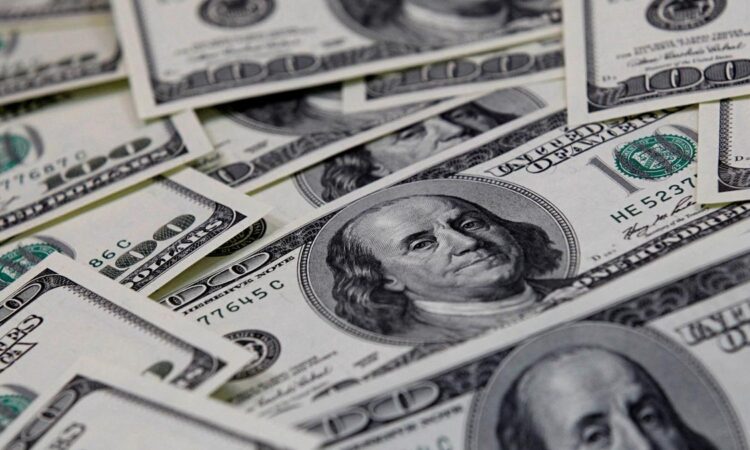

A U.S. economy that continues to outperform its peers could be one factor presenting an obstacle for bearish investors.
| Photo Credit: Reuters
The Federal Reserve’s dovish December pivot has boosted the case for the weakening dollar to keep falling into 2024, though strength in the U.S. economy could limit the greenback’s decline.
After soaring to a two-decade high on the back of the Fed’s rate hikes in 2022, the U.S. currency has been largely range-bound this year on the back of resilient U.S. growth and the central bank’s vow to keep borrowing costs elevated.
Last week’s Fed meeting marked an unexpected shift after Chairman Jerome Powell said the historic monetary policy tightening that brought rates to their highest level in decades was likely over, thanks to cooling inflation. Policymakers now project 75 basis points cut next year. Falling rates are generally seen as a headwind for the dollar, making assets in the U.S. currency less attractive to yield-seeking investors. Though strategists had expected the dollar to weaken next year, a faster pace of rate cuts could accelerate the currency’s decline.
Perilous undertaking
Still, betting on a weaker dollar has been a perilous undertaking in recent years, and some investors are wary of jumping the gun. A U.S. economy that continues to outperform its peers could be one factor presenting an obstacle for bearish investors.
The Fed’s aggressive monetary policy tightening, along with post-pandemic policies to boost U.S. growth, ‘fueled the notion of American exceptionalism and delivered the most powerful dollar rally since the 1980s,’ said Kit Juckes, chief FX strategist at Societe Generale.
With the Fed set to ease policy, ‘some of those gains should be reversed.”
The dollar is on track for a 1% loss this year against a basket of its peers.
For the U.S., a weak dollar would make exports more competitive abroad and boost the profits of multinationals by making it cheaper to convert their foreign profits into dollars. About a quarter of S&P 500 companies generate more than 50% of revenues outside the U.S., according to FactSet data.
An early December Reuters poll of 71 FX strategists showed expectations for the dollar to fall against G10 currencies in 2024, with the greater part of its decline coming in the second half of the year.
Eurozone worsens
So far, it’s been an uneven picture. In the eurozone, a downturn in business activity deepened in December, according to closely watched surveys that show the bloc’s economy is almost certainly in recession. Still, the European Central Bank has pushed back against rate cut expectations as it remains focused on fighting inflation. The euro is up 2.4% against the dollar this year.
The “growth slowdown is more entrenched in other economies,” said Thanos Bardas, senior portfolio manager at Neuberger Berman, who is bullish on the dollar over the next 12 months. “For the U.S. it will take a while for growth to slow down.”
Others, however, see areas of strength, particularly in Asian economies. Paresh Upadhyaya, director of fixed income and currency strategy at Amundi U.S., says he believes the market is “way too pessimistic” on the outlook for growth in China and India.
Accelerating growth could boost the countries’ appetite for raw materials, benefiting commodity currencies such as the Australian, New Zealand and Canadian dollars. China will step up policy adjustments to support an economic recovery in 2024, according to state media reports.
The International Monetary Fund in October forecast the U.S. economy would grow by 1.5% in 2024 compared with 1.2% for the eurozone and 4.2% for China. The dollar’s trajectory could depend on how much Fed easing and falling inflation is already reflected in its price.




